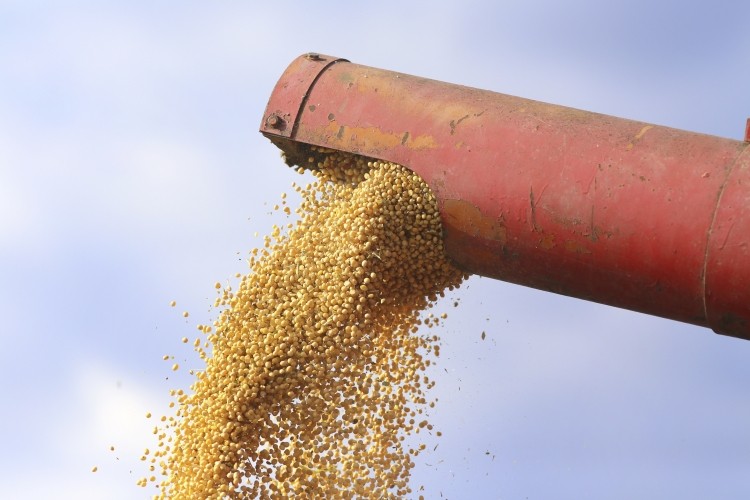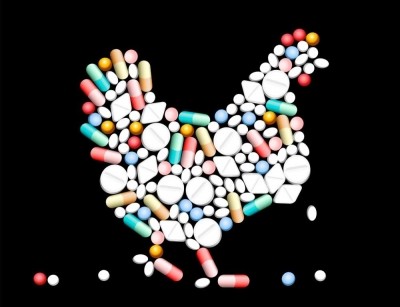"We’ve been able to absorb the supplies without dramatically disrupting the markets"

The US feed crop harvest for 2016 is nearing completion, reported the US Department of Agriculture (USDA) on Monday. Corn has reached 93% harvested for the year and soybeans have hit 97% completion.
Along with the record harvest amounts, there are several factors likely to play a role in feed commodity pricing looking forward and potentially what is planted in the spring, said Bill Lapp, founder and president of Advanced Economic Solutions and a speaker at the ongoing Oilseed and Grain Trade Summit.
“This is the first time since 1979 that we’ll have record yields in corn, wheat and soybeans all in the same year,” he told FeedNavigator. “We’ve got record supplies this fall.”
The current crop is large enough to create a storage “crunch,” he said. “And if there’s a surprise here, it’s how well we’ve been able to absorb the supplies without dramatically disrupting the markets,” he added.
Demand and the export markets have played a role in maintaining the futures or cash prices, he said. Looking forward exports may continue to play an important role, although there could be influence from the change in administration.
“To preempt all that, the last time we had record yields [in all three crops] was 1979, so not only is it unlikely to repeat, we will see a decline from a current year in output,” said Lapp. “Before we get through the spring we’ll have weather conditions, each year is independent, but the assumption today going into the spring is we’re going to have normal weather, but at some point it will be too hot, or too wet, or too dry or too something and that will wake the markets up.”
Incoming administration
In terms of feed crop commodities there are a few questions raised by the new administration and the new members of Congress, said Lapp. “I think the largest risk of a new administration may be president-elect’s promise to broadly interfere with trade,” he added.
With the incoming administration, it has been hard to “distinguish rhetoric and reality,” he said.
There have been comments about the potential for attempts to renegotiate NAFTA (the North American Free Trade Agreement) or to impose tariffs on counties like Mexico or China, he said. “To the extent these promises are carried out, it carries some risk to disruptions of trade – if we decide to impose a tariff on another country it’s likely they would retaliate in some way, shape or form,” he added.
However, there are other influences in the market that also will play a role moving forward, said Lapp.
“The supply and demand fundamentals will rule as they generally do – they’ll be the primary price drivers,” he said. “I don’t expect the change in leadership to be the first and foremost change on market.”
The markets also may be moving toward a stronger dollar, he said. That has been the overall trend since May and has continued in recent days, and could have an adverse influence on exports.
“Generally, a strong dollar is a negative on commodity prices and that really still holds true,” he said. “There is speculation that someone from the agriculture world will step in at EPA, but we don’t know that yet – [and a] potential influence for the renewable fuel standards.”
Additionally, a continuing surplus of crude oil also could weigh on prices, he said.
US export market
Fall demand has been good for feed crop exports, which has been making some space for the excess supply, said Lapp. “Wheat exports have improved dramatically and corn exports have been strong too – we’ve had a good pull for grain during those times, which have reduced the bearish supply,” he added.
The outlook for soybean exports also has been positive and that should continue through the next few months, he said.
“December corn is up and soybeans, in spite of the upward revisions to the us soybean crop, we’re still off of contract lows and holding near $10 lows and wheat is off of contract lows,” he said. But, interactions between the crop prospects in South America and the potential for change to the dollar could alter the market by 10% in either direction, he added.
“And China is the key to all this,” said Lapp. “In one month, China’s imports were equal to the entire crop of the state of Indiana – it’s a sizable underpinning and demand in that market and I see no reason for that to change – protein meal demand should remain strong and favorable.”
Protein output also is considered likely to continue to grow, although producer margins may not be favorable, he said.
Feed crop acres
There is the potential for acreage swap in the spring, with area likely going to grow soybeans, said Lapp.
“We’ll come into the new [year] wondering how much less winter wheat we’ll have planted and we’ll find out from the USDA on January 12 in the initial seeding report,” he said. “The questions through the spring will be which crop will be favored for more acres in 2017.”
To meet feed ingredient demands yields need to increase by about 1 to 1.5% a year, he said. However, for oilseeds, like soybeans, demand has been increasing by 3.5-4% a year.
“There is a natural requirement year-in and year-out to incentivize the planting of 2m acres more of soybeans a year worldwide,” said Lapp. “So, there is something that underpins these markets.”












